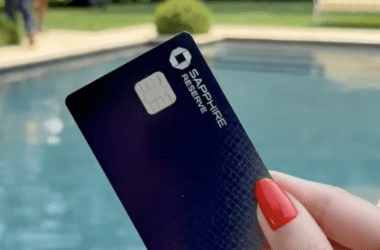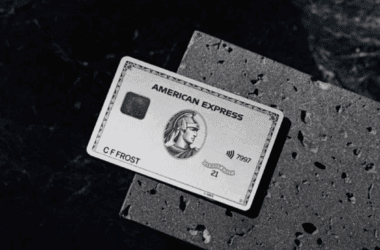One of the questions that I’m frequently asked is: “So which credit card should I get?”. Beyond that first credit card, there’s a long way to go if you’re looking to play the miles and points game long term. If you intend to travel longer and farther, then you need to put in the hard yards have a sound long term plan and craft a long term miles & points credit card strategy.
DEVALUATIONS and their impact on credit card strategy
This is the big dreaded word. We were all nice and cozy sitting atop our stashes of miles and points. All of a sudden, the unfathomable happened. Well, not quite that unfathomable but definitely something unfavorable for us travel aficionados. Loyalty programs have been giving us one gut punch after another in reducing the value of their miles and points.
In spite of these frequent changes, they’ve still not gotten better at communicating these changes with us. Given such a volatile scenario where the value of miles/points that you hold keeps changing, what should be your next move?
CO-BRANDED CARDS
If you are looking to build a sizable chunk of miles and points, then it would be prudent to not store them all in one bucket. Co-branded cards can provide value if you travel frequently on a particular airline or stay at a particular hotel chain. Beyond that, I really do not see any merit in signing up for co-branded cards just for earning the miles.
A simple case in point being the repeated ‘limited time offers‘ appearing this year. But are all offers created equal? We’re already seeing elevated welcome bonuses on co-branded credit cards with Marriott, Hilton and Delta. However, if you don’t fly Delta, then does it make sense to jump on to an offer just because it’s a six digit offer?
Also Read
Earn up to 200,000 points with Marriott credit card offers
Up to 150,000 points + 1 free night with Hilton credit card offers
Earn up to 100,000 miles with Delta co-branded credit offers
Instead, you could earn Membership Rewards points instead of Delta SkyMiles by signing up for an Amex card that offers Membership Rewards points. This way you’d be free to transfer these miles to Delta or any of the other Airline or Hotel partners based on your travel needs. Conversely, once you have a co-branded card you’re stuck in that currency.
FLEXIBLE POINTS CURRENCIES
As loyalty programs undergo rapid changes, we’ll gradually see savvy travelers shift their strategy to building a stash of flexible points currencies. This is a wise strategy to hedge against a devaluation. I have a significant chunk of points in my Membership Rewards and Ultimate rewards accounts. I see these points as a great way to have a lot of flexibility when I travel. Also, I’m not stuck to one particular alliance or partner due to the diversity of transfer partners.
For example, I’ve transferred Chase points to Hyatt to stay at their wonderful all-inclusive properties. While planning a trip to Cancun, I found no availability at any of the Hyatt properties for my dates. I transferred a handful of Amex points to Hilton in order to top off my account and booked the all inclusive Hilton Playa del Carmen.
THE PUNDIT’S MANTRA
- Start with a flexible points currency and put your recurring expenses. You can start with the Amex Everyday Preferred Card or the Chase Sapphire Card as your first card, if you intend to slowly dip your toes.
- Ensure that the flexible points currency cards have bonus points categories beneficial to you. Look for simple categories like restaurants, groceries or streaming services. The key here is to find a card to spend money on things you are already spending anyway. For example, let’s say you want to earn Membership Rewards points on your travel and dining spend. In that case, I’d highly recommend a card like the Amex Green Card. It has a $150 annual fee and earns 3x points on all travel and dining. Moreover, Amex is offering the best ever welcome bonus on this card currently.
- Apply for a co-branded credit card only if you frequently fly a particular airline or stay frequently at a hotel chain. In my case, I carry the Hilton Aspire Card due to my loyalty to the Hilton brand. Since I’m not a hub captive and not loyal to any domestic airline, I don’t carry a co-branded airline card.
- Finally, review your travel goals and see how a particular credit card or cards fit into the mix. I’ve found a great deal of satisfaction in using my miles and points credit cards to get to places where I want to travel.
Has your credit card strategy changed over the years due to devaluations and new product offerings? Do you still see value in holding on to co-branded credit cards? Let us know in the comments section.
___________________________________________________________________________________________________________________
HIGHEST EVER WELCOME BONUS FOR THIS CARD!
For a card that charges an annual fee of $150, you can earn 60,000 points + $200 with a single welcome bonus. Click on the link below to find out more…
CLICK HERE FOR THIS LIMITED TIME OFFER
___________________________________________________________________________________________________________________
Never miss out on the deals, news and travel industry trends. Like us on Facebook, follow us on Instagram and Twitter to keep getting the latest content!














Interesting take on flexible awards. Most people I know are now going that direction. The one aspect of a co-branded card that I think deserves a little discussion is that they are important for tier status. Having the higher tier status can make a travel experience all the difference, especially if there are changes during the trip (weather delays, etc).
Yes, it makes sense if you’re loyal to a particular brand and really value airline status. Like I said, that’s why it makes sense for me to carry the Hilton Aspire card. I get free breakfast outside the US (which is 90% of my travel) and I get to keep diamond status. Since I’m not loyal to a particular airline, I don’t carry any co-branded card. MR and UR points make sure I have enough options on the table to book flights with points.